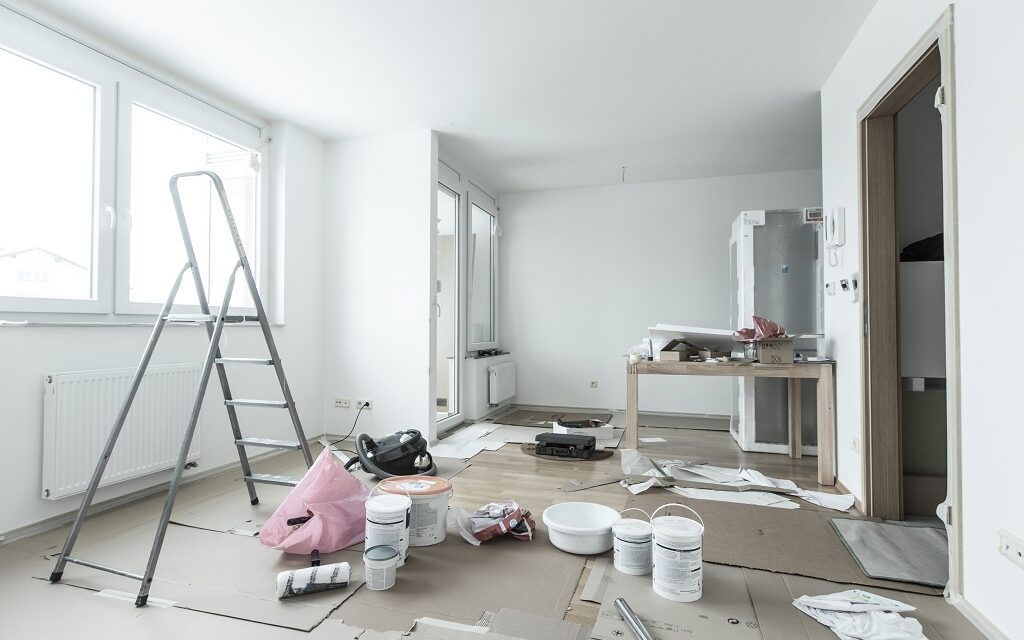Working with a reputable licensed general contractor will not guarantee that your renovation project will run flawlessly and without risks. Even with the best contractor, any homeowner would be wise to take precautions that will protect the safety and security of their family and assets, including before the contract is signed.
Here are several tips that will help you keep your family and home safe during a wide range of home improvement, renovation and remodeling projects.
9 Home Renovation Safety Tips
- Recognize Risks Besides Workmanship, Budgets & Schedules
- Always Have a Plan to Protect Your Family During Any Project
- Know and Verify Who is on the Project Team
- Adequately Seal Off the Project Area
- Communicate through the GC or Foreman Only
- Prep and Closely Monitor Your Children
- Have Adequate Insurance Coverage
- Review Safety and Security Protocols with Your General Contractor
- Consistently Monitor the Project for Safety and Security
Also see:
- How to Protect Yourself During Service Calls in Your Home
- Home Renovation Contracts: Costly Mistakes to Avoid
- 10 Conflicts of Interest Every Homeowner Should Know
- More Recommended Protection & Safety Articles
- Related Topics: Protection & Safety | Renovations | Contracts | Construction | Hiring Contractors
1. Recognize Risks Besides Workmanship, Budgets & Schedules
The most common types of risks that most homeowners think of when entering renovation projects are:
- Quality & Accuracy of Work
- Budgets
- Schedules
Though these are certainly important concerns, there are many other risks that need to be addressed prior to starting a major renovation project. Other risks include:
- Personal Protection
- Insurance
- Security
- Workspace Safety
- Health & Wellness
Also see:
2. Always Have a Plan to Protect Your Family During Any Project
Protection and security of family members are both extremely important, especially if you are female, or have young children, elderly family members, or pets in the home during the construction process. There are a few steps you can take to maintain control and peace of mind during this renovation period to mitigate your risks.
First and foremost, do not be lulled into a false sense of security that persons working on your project have all been thoroughly vetted by either the general contractor, corporate home services company, or third-party referring entity, such as a lead-generation home services site. Even the most-established, best-known home services companies have been culpable of horrific incidents in the households of customers due to faulty screening processes of their employees.
Insist on having a full-time supervisor or foreman on the job site at all times when other employees are present. The supervisor should be the first to arrive and the last person to leave the job site every day.
All requests and communication should go through the supervisor, who must have a strong command of both written and verbal English, should you need to refer to the contract on any issue.
When vetting prospects to find a trustworthy contractor, you should request to meet or interview the foreman, as that is the person with whom you will likely have the most interaction.
Also see:
3. Know and Verify Who is on the Project Team
How will you determine who is part of the project team?
All employees on the job site should be required to have proper photo identification and, if asked by the homeowner or any family member, must present this on request. Make sure that your general contractor conducts background checks and drug testing of employees as part of their employment process, especially if you have small children.
We also recommend including contract terms that forbid the following activities on the premises and during working hours:
- Alcohol Consumption
- Drug Use
- Smoking
Smoking is not just a health issue, but a fire risk. These types of terms will also help attract firms that confidently meet these requirements, while warding off less-than-stellar alternatives.
Another invaluable security measure to take is to always confirm by phone, text or email with a dispatcher who is scheduled to be on site, before allowing a worker inside your home. This simple practice can trigger an alert that someone is attempting to be on-site when they have no authorized reason for being at your residence.
Also see:
4. Adequately Seal Off the Project Area
The areas of construction should be sealed off with heavy duty enclosures to protect the household against airborne construction particles and dust. Employees should be assigned a designated entrance through which they can enter and exit with construction tools and materials. General contractors should be required to provide portable sanitary facilities for their employees, to restrict access throughout the property, as well as reduce unnecessary wear-and-tear.
Also see:
5. Communicate through the GC or Foreman Only
Though we often enjoy getting to know the members of crews and establishing a respectful rapport, legal advisors commonly advise that communication between homeowners and construction teams always go through the GC or foreman. A key legal liability concept that all homeowners should familiarize themselves is the Privette Doctrine, which is a set of homeowner protections granted in the state of California.
As most states offer similar liability protections to homeowners, it is most important for homeowners to understand exceptions of this kind of protection. In short, giving direction to frontline workers can make the homeowner liable for mishaps and injuries resulting from these requests.
The practice of not allowing workers unnecessary access to your home will also reduce the chances of miscommunication that can cause issues, as limiting physical proximity will lessen interactions.
Also see:
6. Prep and Closely Monitor Your Children
Children should never be unattended during construction projects. Your contractor should not be viewed as a backup babysitter. When you leave your home to run errands, take the children with you. Always educate children on staying clear of the construction area and discuss the importance of safety during the renovation. Inquisitive and explorative personalities will need to be curbed. Thus at the end of each day, perform a supervised walkthrough with the children, so that you can control their “need to know” about what’s happening behind the plastic.
7. Have Adequate Insurance Coverage
Consult with your homeowner’s insurance agent to understand how your current policy protects you and your assets throughout the renovation:
- Is the policy clear on legal liability for accidental fires, or water damage caused by the contractor or his employees?
- What are your legal responsibilities should a worker have an accident on your property?
- How can you defend against claims that should be covered by the general contractor’s workers compensation or general liability insurance?
Request proof of a contractor’s general liability and workers compensation coverage and make sure that it is current and active for the dates of your project’s duration and the amounts stated.
Make sure your contract includes a statement from the general contractor representing that all subcontractors are licensed and that all employees are covered by workers compensation insurance.
8. Review Safety and Security Protocols with Your General Contractor
Review the safety and security protocol that will be followed from day one of your project:
- Will there be fencing around the perimeter?
- How will fencing be secured (lock and code, combination code)?
Review protocols for fire:
- Are their extinguisher readily available in the construction area?
Also see:
9. Consistently Monitor the Project for Safety and Security
Each day review the project progress and discuss any issues you may have with any defects or workmanship that is not as expected. Always take pictures and follow up with the GC to make sure you have fully documented your concerns.
With so many risks inherent from a large construction project, it is important to place safety and security for your family and home at the forefront of the planning process.
Related Articles
- Security and Safety Products for Your Home Renovation Project
- How to Deal with a Bad Contractor and Reset Your Renovation
- How to Choose a Trustworthy Contractor
- Signs of a Bad Contractor Before You Sign a Contractor
- What to Include in Your Home Renovation Contract
- Homeowner Liability and DIY Projects







